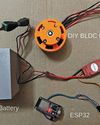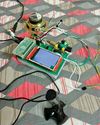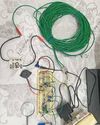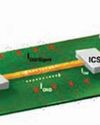
Satellite-to-cell technology, once limited by high costs, is now gaining traction through startups like AST Mobile and Lynk, aiming to enhance satellite connectivity. This advancement is particularly crucial in areas with sparse cellular infrastructure, where it can be instrumental in emergencies.
The mainstream adoption of satellite connectivity in smartphones is imminent, with Android 14 compatibility and speculation about other major manufacturers following suit. This shift is supported by the 3GPP’s Release 17 standards, which recognise satellites as a complementary technology to cellular communication. This recognition paves the way for emergency text messaging and potentially broadband communications.
The rise of satellite-to-cell technology
The integration of satellite connectivity in smartphones, led by companies like Huawei and Apple, marks a significant shift in mobile technology. This feature enables devices to send SOS messages via low-orbit satellites in areas lacking cellular signals, offering crucial support in emergencies. As technology evolves, terms such as ‘satellite communication’ and ‘non-terrestrial networks (NTN)’ are increasingly prevalent in both consumer and technical conversations.
Direct-to-handset satellite communication is gaining consumer and regulatory attention, with forecasts suggesting over 200 million satellite-compatible smartphones will be sold by 2024 end. While this technology may not match terrestrial cellular services in speed and latency, it offers a unique solution for connectivity in currently underserved areas, potentially bridging the coverage gap in remote regions and creating new opportunities for rural businesses and individuals.
The evolution of satellite connectivity in smartphones
Bu hikaye Electronics For You dergisinin August 2024 sayısından alınmıştır.
Start your 7-day Magzter GOLD free trial to access thousands of curated premium stories, and 9,000+ magazines and newspapers.
Already a subscriber ? Giriş Yap
Bu hikaye Electronics For You dergisinin August 2024 sayısından alınmıştır.
Start your 7-day Magzter GOLD free trial to access thousands of curated premium stories, and 9,000+ magazines and newspapers.
Already a subscriber? Giriş Yap

ESP32-Powered AUDIO-VISUAL SIREN
This sound alternator is designed to simulate the effects of a police siren, combining sound and light to create a dynamic audio-visual experience.

BLDC MOTOR With Web-Based Speed Control Using ESP32
Integrating wireless control into brushless direct current (BLDC) motor systems opens up exciting possibilities for applications such as remote-controlled cars, robots, and other innovative systems.

Pi Zero Portable BILINGUAL TRANSLATOR
This system is designed as a bilingual translator, leveraging the gTTS library to support multiple Indian languages, including English (en), Bengali (bn), Gujarati (gu), Hindi (hi), Kannada (kn), Malayalam (ml), Marathi (mr), Tamil (ta), Telugu (te), and Urdu (ur).

Op-Amp-Based VEHICLE THEFT DETECTOR
A simple, low-cost device can effectively alert homeowners or occupants if a parked vehicle is moved or tampered with.

loT SMART METER With Dashboard
Energy meters in homes track electricity usage, enabling accurate billing by governments and providers.

Choose The Right Cloud Platform For Implementing loT PROTOCOLS
Working with loT protocols like MQTT, AMQP, and CoAP on cloud platforms is essential for developing scalable and efficient lol applications. The choice of the programming platform will depend on factors like project requirements, existing skills, and target devices. Leveraging the appropriate libraries and cloud services can enable seamless integration of lol devices with cloud-based applications.

Why TMR SENSORS Lead Next-Generation Design
TMR sensors are gaining traction in industries needing precision and power efficiency. What makes them the go-to choice for modern designs?

DESIGNING PCBs For EMI Management
Electromagnetic interference can derail your PCB’s performance. EMI management is not just a technical necessity but a hallmark of exceptional PCB design.

CUTTING COSTS, NOT CORNERS: Building Large Scale Applications With Open Source Software
Here are some strategies and best practices for leveraging open source to create enterprise-grade web and mobile applications without sacrificing quality or functionality.

"We Are One Of India's Very Few State Bodies To Manage The Entire Lifecycle Of The Electronics EcosystemFrom Approvals To Subsidies."
What is Gujarat State Electronics Mission GSEM), and how is it attracting major investments in electronics manufacturing, particularly semiconductor manufacturing, to Gujarat? To delve deeper, Electronics For You’s Nijhum Rudra spoke with Manish Gurwani, the head of GSEM. Here is what he revealed...